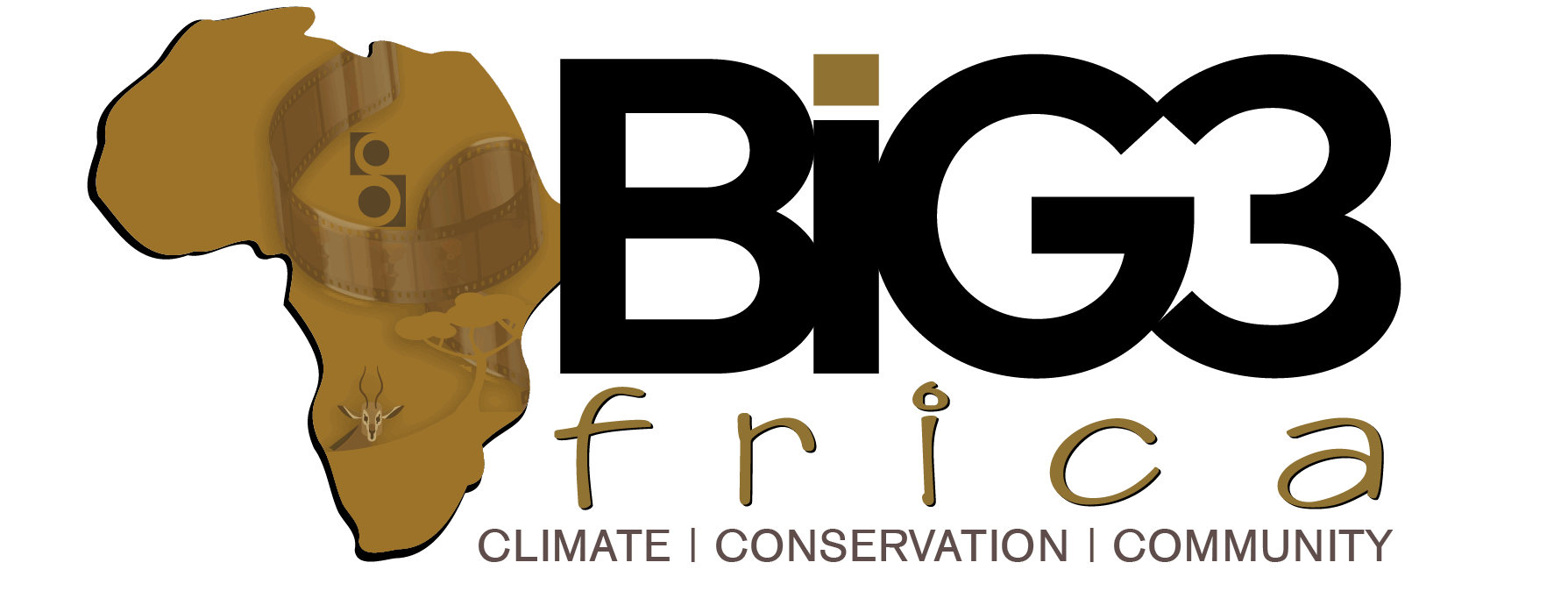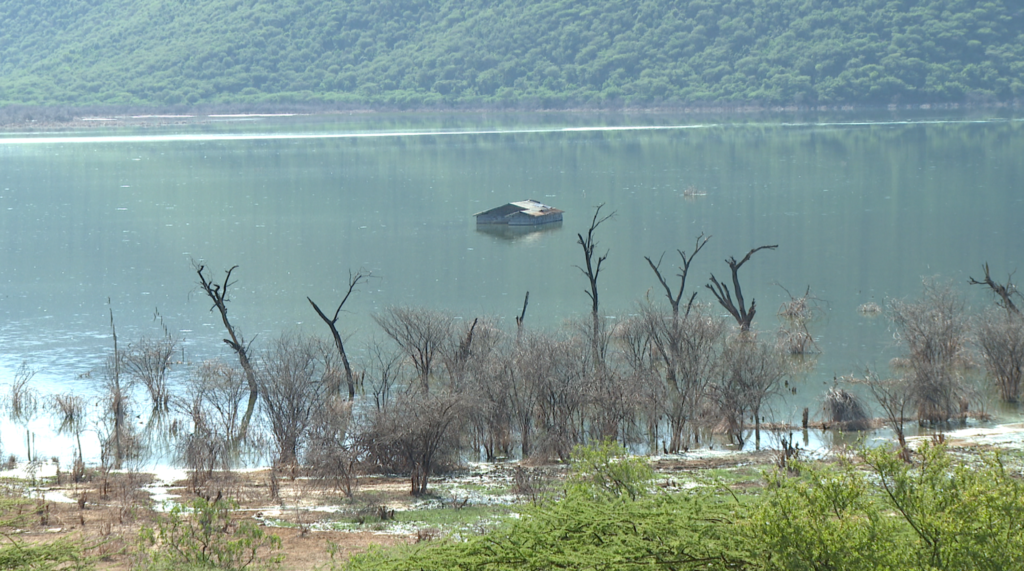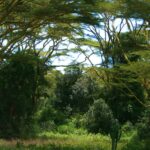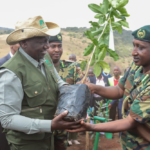After curtains fell at the first Africa Climate Summit, with calls to action by African countries to the Global North who bare the greatest responsibility of greenhouse gases emissions which the reason for climate change, victims of floods after Rift Valley lakes waters rose steadily in 2021 leaving thousands homeless, hopeless and economically crippled still remain displaced.
Dispossessed of their land, the climate refugees of Kenya endure the relentless onslaught of climate change, which drove them from their homes as the lakes in the vast Rift Valley overflowed, compelling them to seek refuge alongside wildlife in Baringo County’s Lake Bogoria National Reserve.
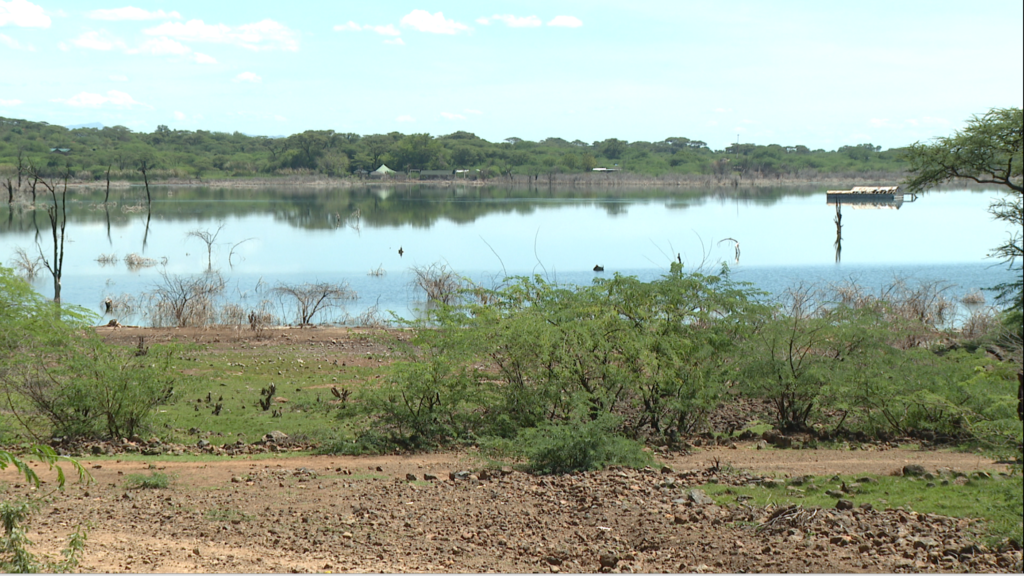
In the face of this catastrophic humanitarian crisis caused by tectonic plate movements within the Rift Valley, sedimentation, improper land use, and climate change, as stated by scientists, we embarked on a fact-finding mission to assess the consequences of rising water levels in the areas where thousands had sought shelter, in order to determine the measures taken to assist residents in rebuilding their lives three years later.
Amidst the chaos, numerous internally displaced persons (IDPs) have sought solace in the vicinity of Lake Bogoria, after their homes and land was swallowed by the rising waters of lake Bogoria. Women and children have been particularly affected, with the number of households in dire need of assistance. At least 150 households reside in Lake Bogoria National Reserve, with hope of getting a permanent home one day.
“I lost two acres of land. One was where my home stood, and the other was my farming land. I used to grow vegetables, maize, and fruits. It was enough for my family,” said Beatrice Kurgat.
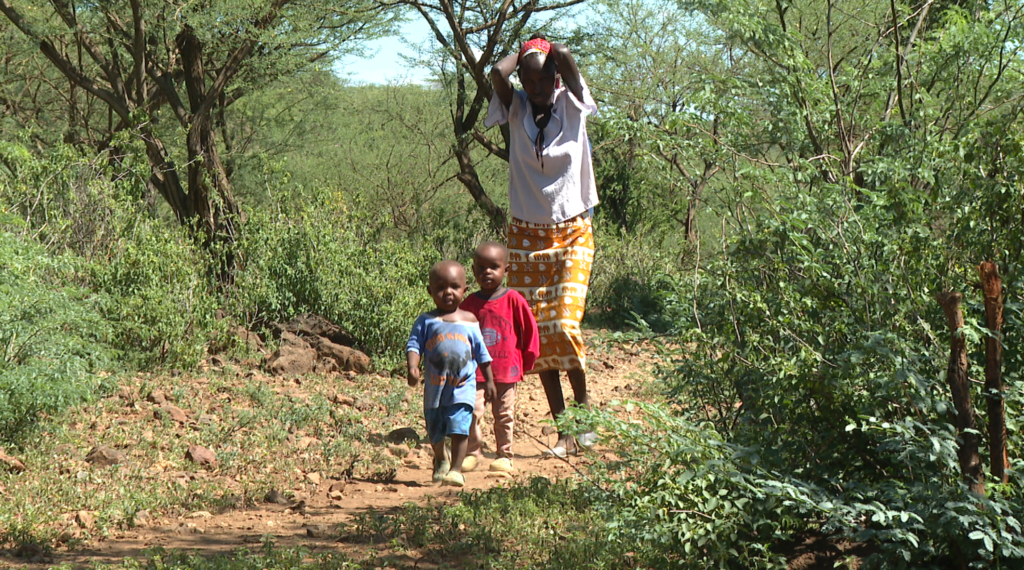
Kurgat, a mother of nine, is among fifty others who now find themselves seeking refuge in Lake Bogoria National Reserve. Recently, life has become even more challenging after her daughter gave birth to twins in harsh living conditions, raising the total number of dependents in her household to thirteen.
“After my daughter gave birth to twins two years ago, life became very tough. My grandchildren need milk and food every day. We take turns with my daughter to search for manual labor jobs to earn money for food,” added Kurgat.
The teenage mother revealed that she had to abandon her dreams of pursuing further education shortly after completing her Kenya Certificate of Primary Education (KCPE) exams, which coincided with her giving birth.
“My children’s father deceived me and left me while I was pregnant. At the time, I had no idea I was expecting twins,” said the minor, whose identity we have concealed.
During our visit, we encountered the young mother tending to her sick children. We decided to transport them to the nearest medical facility, several kilometers away from the national reserve.
Our first destination was Loboi Dispensary, which had seen better days before its maternity wing was completely destroyed by the floodwaters from Lake Bogoria.
“Our pregnant mothers face difficulties during childbirth. They are compelled to travel all the way to Marigat town, which is 20 kilometers from here. It has made things tough for them,” said Gilbert Kosgei, a nurse at Loboi Dispensary.
Due to the destruction, crucial maternal care has been denied to the mothers. Additionally, healthcare workers, who have devoted their lives to assisting those in need here, have reported an increase in cases of respiratory ailments, malaria, typhoid, and other diseases resulting from environmental contamination.
Once the young mother received medical attention, we decided to return to the village, where we met Solomon Chepsoi, who had constructed a makeshift house to shelter his family from the harsh environment.
“This is where I moved with my family after Lake Bogoria swallowed my 15 acres of land,” said Chepsoi, as he called his son, who had been forced to drop out of school, to greet us.
“I lost everything. I sold goats and cows and left the place I once called home. Now, I’m living with wildlife,” added Chepsoi.
Chepsoi describes living in a game reserve with wild animals as a nightmare for their newfound community.
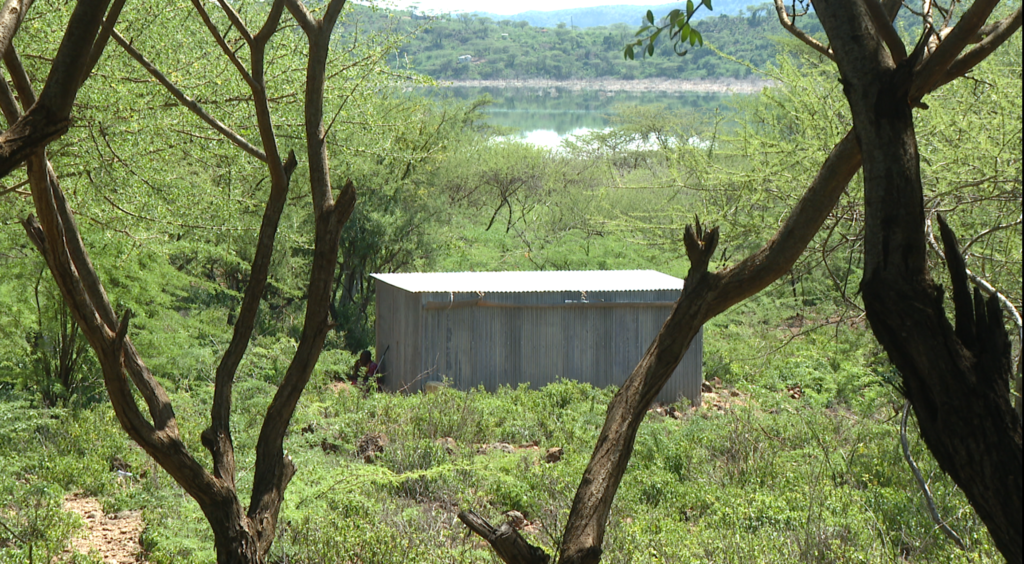
“We have hyenas, hippos, and leopards around here. Just a few days ago, the Kenya Wildlife Service brought a huge python to this reserve, which is currently preying on our goats,” Chepsoi lamented.
Since they reside in a game reserve, wildlife regulations prohibit them from engaging in any form of economic activity. As a result, finding sustenance for their daily needs has become an enormous challenge.
As we tour his makeshift house, Chepsoi’s wife, Caroline Chongole, approaches us. She has just returned from fetching water for cooking and drinking from a spring three kilometers away. Chepsoi explains that the available water near their new home, located at the banks of Lake Bogoria, is unsuitable for cooking or drinking.
“When we go to fetch water at River Loboi, we face the danger of snake attacks,” said Chongole, a mother of seven children.
The area continues to become uninhabitable, and residents have even faced difficulties burying their deceased relatives.
“When someone dies here, we have to leave them at the mortuary. We are not allowed to bury people in the game reserve,” said Chepsoi.
Not far from this household, we meet Belinda Chepsoi, who gazes over the lake and wonders how such a beautiful natural resource could devastate their sources of livelihood. She points out a store at the entrance of Lake Bogoria National Reserve, where she used to make a living. Now, it is submerged in water.
The store served as an economic lifeline for the Lake Bogoria Sossiche Women’s Group, enabling them to earn a decent income by selling tourist trinkets, curios, and drinks to visitors entering the reserve.
Today, she is among the internally displaced persons (IDPs) living in the game reserve.
“We had nine stores where we used to sell our merchandise. It was a double tragedy for us in 2020 when floods and COVID-19 devastated our businesses,” Chepsoi explained.
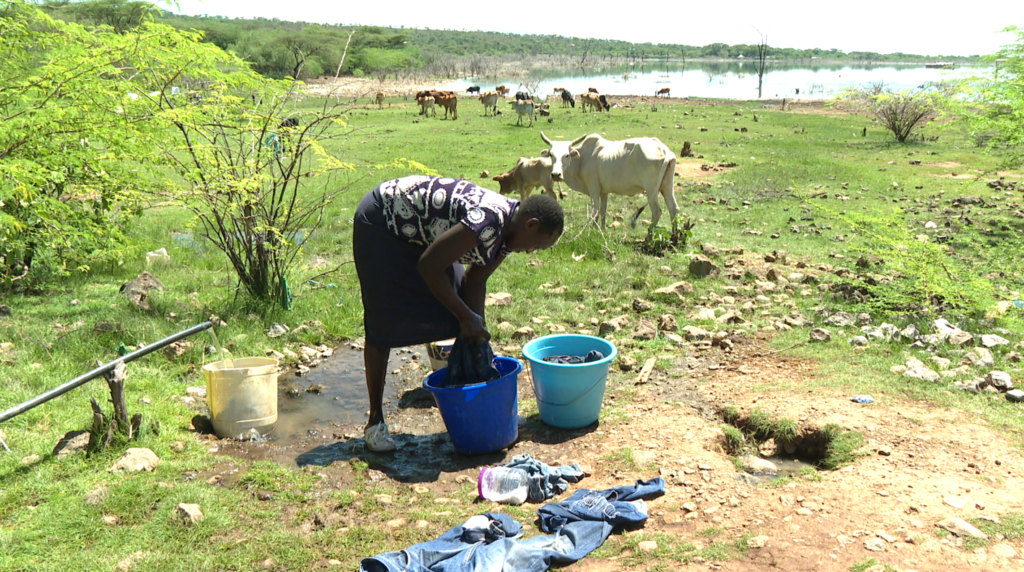
Judy Kiprotich, also a member of the Lake Bogoria Sossiche Women’s Group, is washing clothes at the lake’s banks using water from a nearby spring. However, due to the water’s alkalinity, it can only be used for washing.
The water is unsuitable for drinking or cooking, forcing the IDPs to purchase clean drinking water from vendors at Loboi shopping center, located several kilometers from their new homes.
“With the meager wages we earn from working on people’s farms, which is around 300 Kenyan shillings, we can only focus on food. The cost of living is high, and the money is insufficient to buy drinking water. Our children have no choice but to consume this water as it is,” said Kiprotich.
Kiprotich explained that their children face health risks from consuming this water, as they have developed bone diseases like rickets.
“It’s sad that when our sons go for police recruitment drives, they are rejected due to the color of their teeth,” added Kiprotich.
The mass displacement of people resulting from this humanitarian crisis has led to an increase in teenage pregnancies in the area. Residents are also concerned about the rise in the sale of illicit brews, with women now taking on the responsibility of providing for their families.
“Our husbands are nowhere to be found. They drink every day, and we don’t know where they get the money from. We are left to bear the burden of feeding our families,” said Kiprotich.
On our way to the next household, we encounter Roseline Nyato, sitting with her daughter, who has been forced to stay home due to a lack of 1,700 shillings in remedial fees.
Nyato planned to seek casual work on a farm several kilometers away, where she would earn as little as 250 to 300 shillings per day. Before leaving, she decided to visit Liboi Primary School to plead her daughter’s case and enable her to resume her studies.
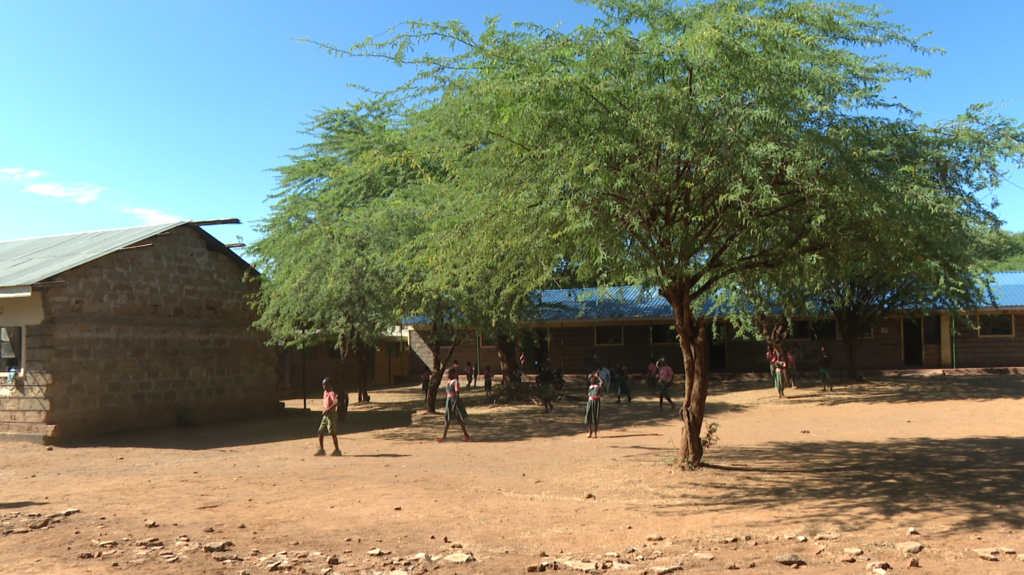
James Lusute, a teacher at Loboi Primary School, explained that children from the game reserve face challenges in attending school on time due to wildlife encounters.
“Our children used to arrive late and leave early, but now, in collaboration with the Kenya Wildlife Service and private security firms, we conduct patrols to ensure the safety of our students. Things are improving,” said Lusute.
James Kimaru, the senior warden of Lake Bogoria, stated that the national government, through the county government’s integrated program, has been undertaking interventions to address the humanitarian crisis caused by floods in Baringo County. These interventions include public participation and measures to prevent infrastructure from being built beyond the marked points, which indicate the highest water level reached by the lake.
Lake Bogoria is a breeding area for lesser flamingoes, but their numbers have significantly declined after the floods. However, the lake is now receding, and Kimaru anticipates the return of millions of flamingoes during this year’s migration, starting in June.
A 2022 report by the Kenyan government and the United Nations Development Programme (UNDP) revealed that rising water levels had created a humanitarian crisis, with approximately 75,987 households and 379,935 people in 13 affected counties requiring urgent assistance after being displaced from their homes.
Another report by the Stockholm Environment Institute indicated that, by the time the local media and the government responded to the situation, over 200 people had died, and more than 160,000 had been displaced from their homes.
Although the Horn of African countries contributes only 0.1% of global emissions, at least 36.1 million people have been affected by climate-related impacts. Over 16 million people lack access to clean water, and 20.5 million face acute food insecurity and rising malnutrition in parts of Ethiopia, Somalia, and Kenya, according to a report by the Institute for Security Studies.
A World Bank study found that as many as 86 million Africans will be forced to migrate within their own countries by 2050 due to climate change-related impacts.
For the residents of Lake Bogoria, particularly those living within the national reserve, time is running out. Nevertheless, they hold onto hope that life will one day return to normal.
To the IDP’s, the summit did not resonate with them, until such a time when their plight will be addressed.

